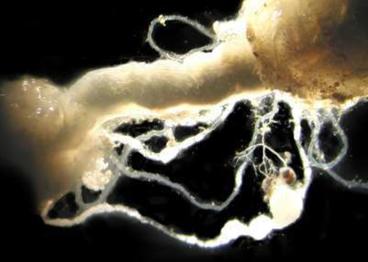Background Information
“The purpose of this research is to develop new management tactics to reduce economic and environmental damage caused by the exotic Japanese beetle with the use of pathogens and JB traps to spread the pathogens. The outcome is to reduce JB numbers locally and to slow its spread around the state of MN. Current insecticides used to control JB grubs in pollinator bee lawns and in restorations have negative effects on pollinators. The research and outreach programs will be used to establish long term and short term management of the exotic pest.

The long term outcome is to establish an endemic pathogen to kill JB. Ovavesicula popilliae was first described in Connecticut and infects JB malpighian tubules and spreads systemically (Andreadis and Hanula 1987). It has since been found infecting JB in Michigan (Cappaert and Smitley 2002), Kentucky (Redmond and Potter 2010), and Arkansas (Petty et al. 2012). Research shows that in 6 years after introduction, the fungus kills 15 percent of the JB grubs (see graphs in methods).”
Important Files:
How To Participate
Thank you for working with us.
Japanese beetle population size is low in Eastern states.
The low number of Japanese beetles is correlated to Ovavesicula spore numbers in the soil.
We are adding spores to different sites to increase the pathogen and reduce Japanese beetle
numbers.
The Japanese beetle pathogen study continues until summer 2026. We are trying to establish the Ovavesicula pathogen that only attacks Japanese beetles. The pathogen is harmless to you and the soil. You can talk to us at [email protected] until Sept 2026.
What you get out of participating in the UMN JB outreach/research program:
1. We visit your site and discuss your grub issue and offer remediation information.
2. We will take 2 cups of soil to send to the UM soil testing lab.
3. We use the soil to identify soil parameters that can be correlated to grub numbers and spore
establishment.
4. If your site qualifies, you will receive some JB pathogen spores in your turf.
5. You are entered in the research program to receive special help for 3 summers until Sept
2026, by contacting us at [email protected]
What research information we gain:
We want to predict soil types that can support JB and JB pathogen spores.We correlate soil parameters like pH, density, N,P,K to grub numbers.
Please follow these directions:
1. To sign up as a pathogen dispersal site, fill out the registration form attached to this email and
send the completed form to [email protected]
2. Take the pre-outreach/research survey by Sept 20 with this link:
It should take 10 mins. There are NO wrong answers; do not be shy. It is an education training event. There is a post-survey to complete after reviewing the following materials.https://forms.gle/UDz2Y12Nr7aHFqhCA
3. Visit the Krischik Lab "Pollinator Conservation" website to learn about pollinators and turf management to protect beneficial insects. https://ncipmhort.cfans.umn.edu/ipm-bmp-cultural-control/turf-best-management-practices
4. Watch the video by October 1st with this link:
https://youtu.be/1pMKppUv1xk?si=_aV064Zfb-cLXcxG
5. Take the post-outreach/research survey after watching the video with this link: https://forms.gle/fS2QvF8LPvSGQuRa9
6. Collect some grubs PRIOR to our site visit.
Find a plastic medicine container with any information crossed out or the label removed. Fill the container with 1/4 inch salt, 2 inches of water, and around 6 grubs. Add more water to cover the grubs. Put the medicine containers in the refrigerator until you give them to us. If you have any questions, please reach out and we will do our best to get back to you.